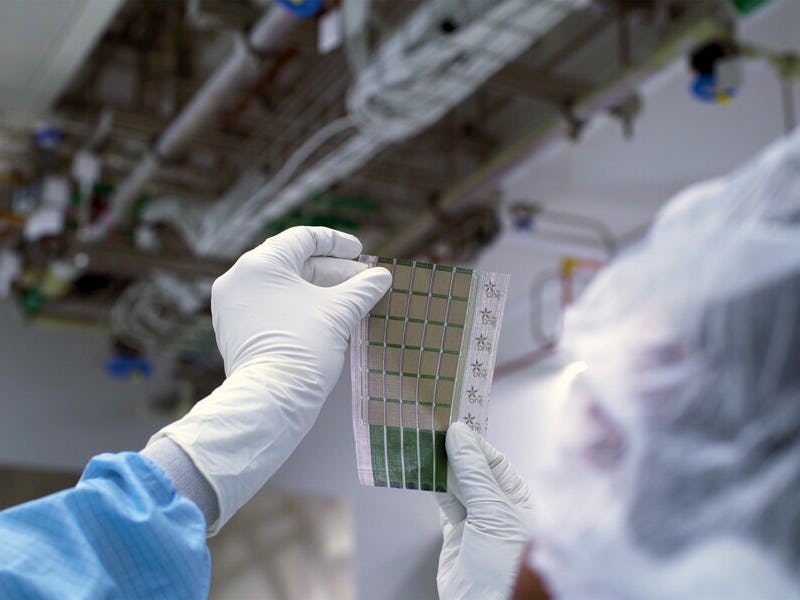Hair-thin solar cells could turn any surface into a power source
At a fraction of the weight, these cells can generate 18 times more energy than traditional panels.

Solar energy is one of the most plentiful clean energy sources on the planet, but harvesting that sunny power often requires heavy, stationary panels built onto roofs or laid out in fields.
Scientists and consumers alike have long dreamed of a more flexible option that could bring us energy wherever we need it — incorporated into vehicles, camping tents, and even our clothing. But researchers have struggled to create solar cells, the building blocks of solar panels, that are both thin and energy efficient.
Researchers from the Massachusetts Institute of Technology may have found a solution, according to a paper published last week in the journal Small Methods.
The new solar cells from MIT scientists can turn any surface into a power source.
What’s new — In their recent work, the research team at MIT’s Organic and Nanostructured Electronics (ONE) lab detailed their plan to build flexible and lightweight solar cells that can be adhered to a variety of surfaces, including fabric.
Glass is a popular base for ultra-thin solar technologies, but the researchers found this material too brittle for their manufacturing techniques because it could not be easily trimmed. Instead, they opted for a 3-micron-thick plastic called polyethylene terephthalate (PET).
The researchers also chose to use an organic version of light-sensitive photovoltaic cells (OPVs). OPVs are made from polymers that are lighter, more flexible, and cheaper than most silicon-based inorganic electronics.
Why it matters — The new cells can generate 18 times more power per kilogram than conventional solar panels.
A typical rooftop solar installation in Massachusetts is about 8,000 watts, first author and graduate student Mayuran Saravanapavanantham noted in a statement. “To generate that same amount of power, our fabric photovoltaics would only add about 20 kilograms (44 pounds) to the roof of a house.”
By comparison, a single solar panel weighs 40 pounds, and homes often have at least 15 panels installed.
What they did — To construct their solar cells, the researchers combined a mix of high-tech methods, such as 3D-printing electronic ink onto the PET sheets, along with more traditional screen printing techniques to place electrodes on top. This 15-micron thick solar cell, which is thinner than a human hair, was then transferred to a super light and durable fabric.
Solar cells are usually encased in heavy glass to protect them from the elements, which makes them rigid and inflexible.
When testing the new solar cells, the researchers found that they could generate 730 watts of power per kilogram before being adhered to the fabric (while risking being easily torn) and 370 watts per kilogram after being more safely adhered.
The researchers also tested the durability of the solar cells by rolling them and unrolling them over 500 times and found that they still maintained 90 percent of their power generation.
While it might seem more straightforward to print the solar cells directly onto the fabric, Saravanapavanantham said the two-step process developed in the study will make it easier to integrate other types of fabric in the future.
What’s next — Despite their impressive initial performance, these solar cells are still facing one major hurdle: how to brave the elements. Typically, solar cells are encased in heavy glass to protect them from the air or rain that could harm their performance, but the ultra-thin cells need to remain flexible for certain applications.
Instead, the researchers are now working to develop lightweight packaging for their solar cells and plan to streamline their production method for improved speed and scalability. For example, they will aim to remove non-solar-active materials when possible.
Ultimately, they hope that this new approach to harvesting solar energy can help increase solar adoption and speed up the shift toward carbon-free renewable energy sources.
This article was originally published on